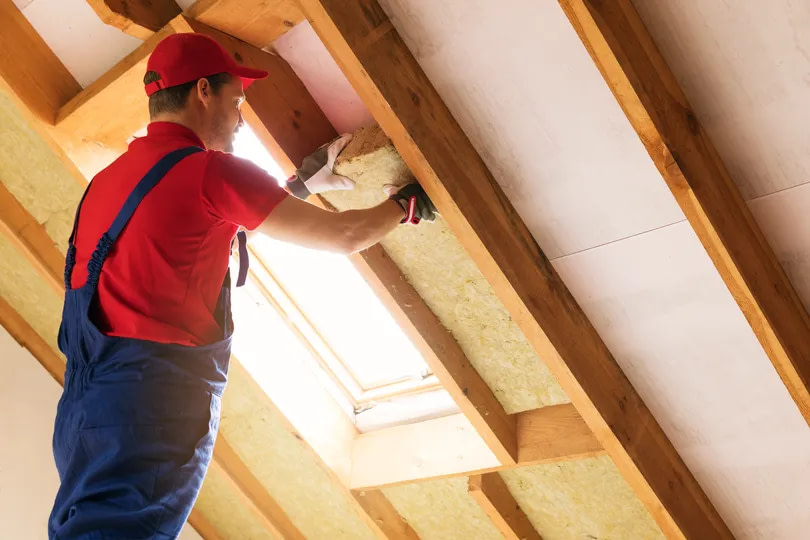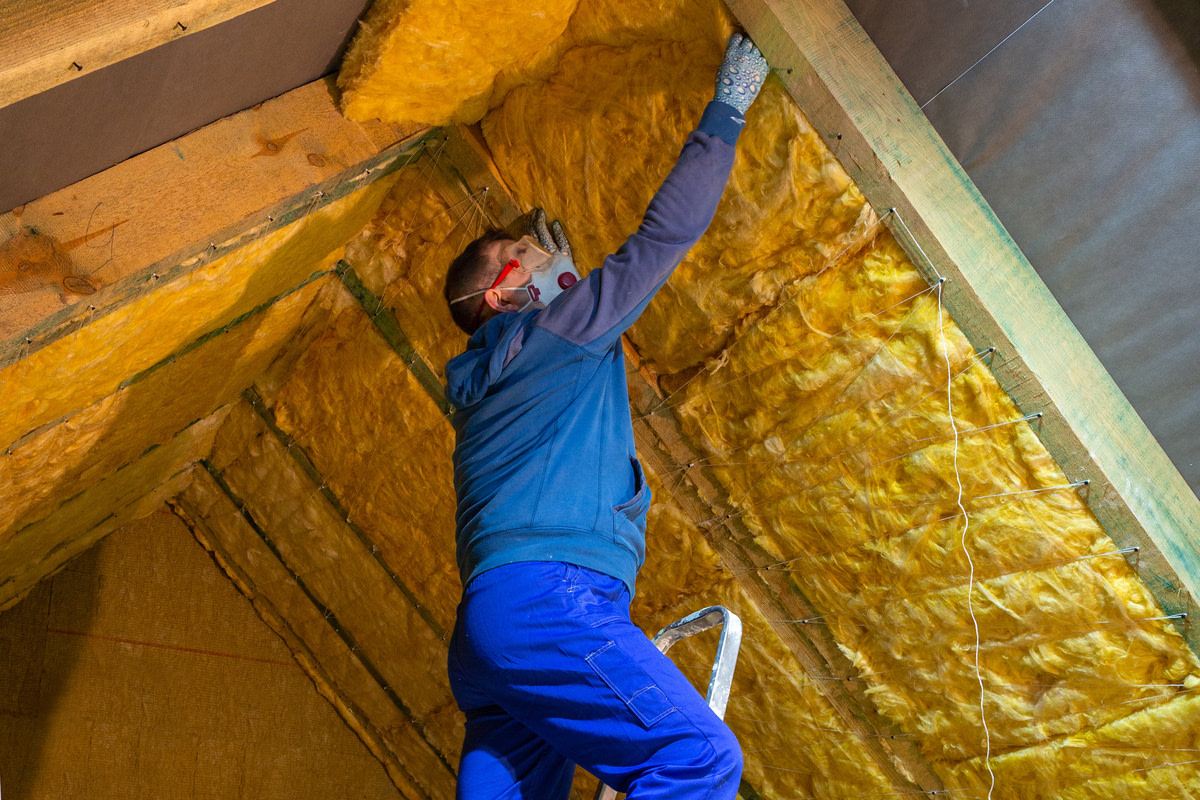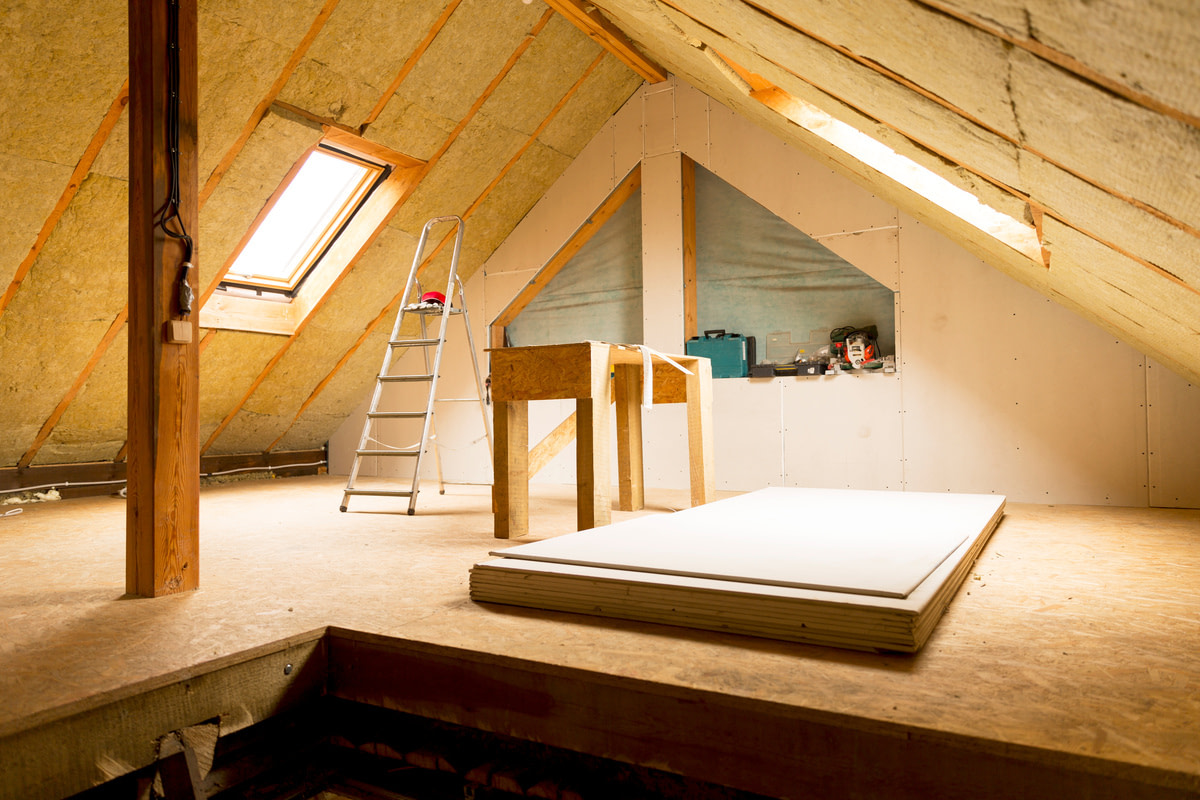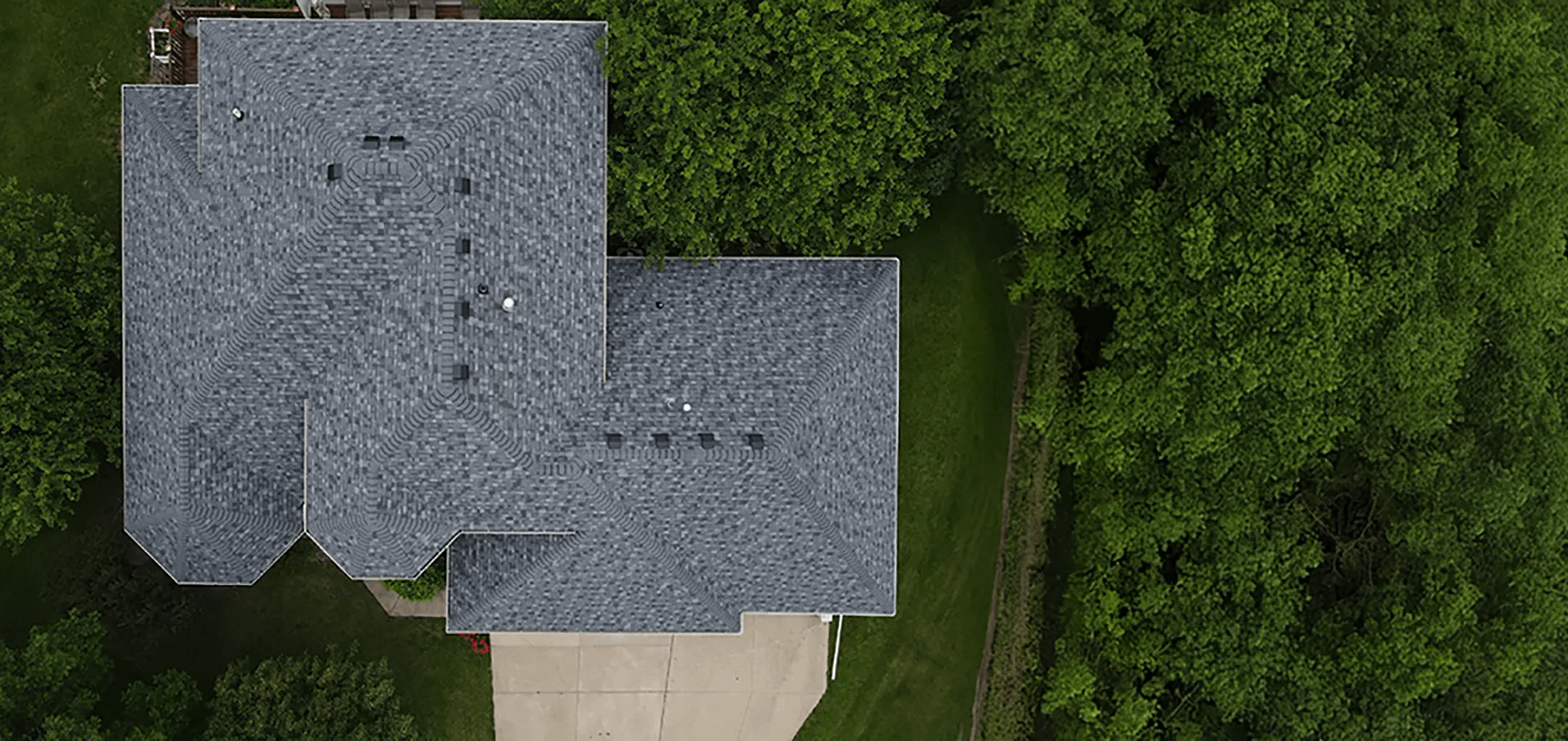Looking to lower your energy bills and make your home more comfortable year-round? Attic insulation is one of the most cost-effective ways to boost energy efficiency — and it can pay for itself in just a few years.
Proper insulation not only helps regulate indoor temperatures, but it also:
- Cuts heating and cooling costs
- Reduces strain on your HVAC system
- Improves overall home comfort in every season
But how much does attic insulation actually cost in 2025?
This guide breaks down the average attic insulation cost, the different types of insulation available, and smart ways to save whether you’re doing it yourself or hiring a professional.

Why Insulate Your Attic?
Before we dive into costs, it’s essential to understand why attic insulation is crucial:
- Energy Savings: Heating and cooling account for approximately 50-70% of the energy used in the average home. Attic insulation can reduce heat loss in the winter and keep your home cooler in the summer, leading to substantial energy savings.
- Improved Comfort: Proper insulation helps maintain a consistent temperature throughout your home, eliminating cold drafts and hot spots. This results in a more comfortable living environment year-round.
- Environmental Benefits: Reducing energy consumption not only lowers your utility bills but also lessens your carbon footprint. Better insulation means your home will require less energy to heat and cool, contributing to a more sustainable future.
- Increased Home Value: Energy-efficient homes are attractive to potential buyers. Well-insulated homes often command higher market prices, making attic insulation an investment that can pay off if you decide to sell your property.
What Affects Attic Insulation Cost?
Several factors influence the cost of insulating an attic. Understanding these variables will help you budget for your project more effectively.
Size of the Attic
The most significant factor in determining the cost of attic insulation is the size of the attic. Larger attics require more materials and labor, which increases the overall cost.
Type of Insulation Material
There are various types of insulation materials, each with its price point and installation requirements:
- Fiberglass Batt Insulation: One of the most common and affordable options. It comes in pre-cut panels and is easy to install but may leave gaps if not fitted correctly.
- Blown-In Insulation: Generally made of fiberglass or cellulose, this material is blown into the attic using special equipment, providing a seamless layer of insulation.
- Spray Foam Insulation: Offers excellent coverage and air-sealing properties but is more expensive than other types.
- Rigid Foam Board Insulation: Provides high insulating value and moisture resistance but is costlier and requires precise installation.
R-Value
R-value measures insulation’s ability to resist heat flow. The higher the R-value, the better the insulation’s efficacy. Different regions have varying recommended R-values based on climate, affecting the type and amount of insulation needed and, consequently, the cost.
Existing Insulation
If your attic already has some insulation, you might only need to add more to reach the desired R-value. Conversely, if the existing insulation is old or damaged, it might need to be removed and replaced, which adds to the cost.
Labor Costs
Labor costs can vary significantly based on your location and the complexity of the installation. Professional insulation contractors may charge more, but their expertise ensures proper installation and maximized energy savings.
Additional Factors
- Ventilation: Proper attic ventilation is crucial for the longevity of your insulation. You might need to install or upgrade vents, adding to the overall cost.
- Moisture Issues: If your attic has moisture problems, they must be addressed before installing insulation. This could involve repairing leaks, improving ventilation, or installing vapor barriers.
- Accessibility: Hard-to-reach attics or those with structural challenges can increase labor costs.
5 Types of Attic Insulation Materials and Their Costs
Not all attic insulation materials are created equal. Here are some different types to consider for your home.
1) Fiberglass Batt Insulation
Cost: $0.30 to $1.50 per square foot
Fiberglass batt insulation is one of the most common types used in attics. It’s made from fine glass fibers and is available in pre-cut panels that fit between standard attic joists. While it’s affordable and relatively easy to install, it requires careful fitting to avoid gaps that can reduce its effectiveness.
2) Blown-In Insulation
Cost: $1.00 to $2.00 per square foot
Blown-in insulation is typically made of fiberglass or cellulose and is installed using a blowing machine. This method allows the insulation to fill nooks and crannies, providing better coverage than batt insulation. It’s an excellent option for irregularly shaped attics but requires professional installation.
3) Spray Foam Insulation
Cost: $1.50 to $3.50 per square foot
Spray foam insulation expands on contact, creating an airtight seal that provides superior insulation and moisture control. It offers the highest R-value per inch but is also the most expensive option. Spray foam is ideal for attics with complex structures or where maximum energy efficiency is desired.
4) Rigid Foam Board Insulation
Cost: $2.00 to $4.00 per square foot
Rigid foam board insulation consists of high-density foam panels that provide excellent insulating properties and moisture resistance. It’s more expensive and requires precise cutting and fitting, making it less DIY-friendly. However, it’s ideal for attics with moisture issues or where a high R-value is needed in a thin profile.
5) Reflective or Radiant Barrier Insulation
Cost: $0.10 to $0.90 per square foot
Reflective insulation or radiant barriers reflect radiant heat away from the attic, reducing cooling costs in hot climates. It’s typically installed on the attic floor or under the roof decking. While it’s not a substitute for traditional insulation, it can complement other types and improve overall energy efficiency.
How Much Insulation Do You Need?
The amount of insulation needed for your attic depends on the desired R-value and the type of insulation used. Here’s a general guideline based on the U.S. Department of Energy recommendations:
- Mild Climates (R-30 to R-49): 10 to 14 inches of insulation
- Moderate Climates (R-38 to R-60): 14 to 18 inches of insulation
- Cold Climates (R-49 to R-60): 18 to 22 inches of insulation
Insulation Materials and Costs Comparison Table
| Insulation Type | R-Value/inch | Material Cost (sq ft) | Installed Cost (sq ft) | Best For | Pros | Cons |
|---|---|---|---|---|---|---|
| Fiberglass Batt | 2.9–3.8 | $0.30 – $1.20 | $0.70 – $1.50 | DIYers, new construction | Easy to install, affordable | Can leave gaps, irritates skin |
| Blown-In Fiberglass | 2.2–2.9 | $0.40 – $0.90 | $1.00 – $2.00 | Retrofits, irregular areas | Good coverage, pest-resistant | Settles over time |
| Blown-In Cellulose | 3.2–3.8 | $0.50 – $1.00 | $1.00 – $2.10 | Older homes, green builds | Recycled content, tight fit | Can retain moisture |
| Spray Foam (Open Cell) | 3.5 – 4.5 | $0.90 – $1.50 | $1.50 – $3.00 | Air sealing + insulation | Air barrier, expands to fit | More expensive |
| Spray Foam (Closed Cell) | 6.0 – 7.0 | $1.50 – $2.50 | $2.50 – $5.00 | High R-value, vapor barrier | High R-value in less space | Costly, not DIY-friendly |
| Rigid Foam Board | 4.0 – 6.5 | $1.00 – $2.50 | $2.00 – $4.00 | Cathedral ceilings, moisture control | Thin but effective | Cutting and sealing needed |
| Radiant Barrier | N/A | $0.10 – $0.80 | $0.90 – $1.50 | Hot climates | Reflects heat well | Doesn’t add R-value |
DIY vs. Professional Installation
Thinking about installing attic insulation all on your own? You might want to think twice. Here are some of the pros and cons of DIY vs. professional installation.
DIY Installation
Installing insulation yourself can save on labor costs, but it’s essential to consider the complexity of the project and the type of insulation. Fiberglass batt and blown-in insulation are more DIY-friendly, while spray foam and rigid foam board typically require professional installation.
Pros:
- Cost savings on labor
- Greater control over the project
Cons:
- Requires time and effort
- Potential for improper installation
- Safety risks (e.g., handling fiberglass, working in confined spaces)
Professional Installation
Hiring a professional ensures that the insulation is installed correctly and efficiently. Professional contractors have the expertise and equipment to handle various insulation types and tackle any challenges that arise during installation.
Pros:
- Expert installation
- Efficient and faster completion
- Warranty and guarantees on work
Cons:
- Higher upfront cost
- Limited control over the project
Cost Breakdown of Attic Insulation
Here’s a rough estimate of the costs involved in insulating a 1,000 square foot attic:
- Fiberglass Batt Insulation: $300 to $1,500
- Blown-In Insulation: $1,000 to $2,000
- Spray Foam Insulation: $1,500 to $3,500
- Rigid Foam Board Insulation: $2,000 to $4,000
- Reflective or Radiant Barrier Insulation: $100 to $900
Keep in mind that these costs can vary based on location, labor rates, and specific project requirements.
5 Proven Ways to Cut Attic Insulation Costs (Without Cutting Corners)
Want to insulate your attic without blowing your budget? These practical tips will help you maximize value and minimize expenses, whether you’re hiring a pro or tackling part of it yourself.
1. Shop Around for Quotes
Don’t settle for the first contractor you call. Get at least 3 quotes to compare pricing, materials, and warranties.
- Look for companies with strong reviews and local experience.
- Ask about volume discounts or seasonal promotions.
2. Use Rebates and Energy Incentives
Many utility companies and state programs offer rebates, tax credits, or zero-interest financing for energy efficiency upgrades.
Pro Tip: Ask your contractor they often know what incentives you qualify for.
3. Do the Prep Work Yourself
Even if you’re hiring a professional, you can still save by doing some of the basics:
- Clear clutter from the attic
- Seal air leaks with caulk or spray foam
- Ensure attic ventilation is adequate
These steps can cut down on labor time and cost.
4. Bundle With Other Projects
If you’re already replacing a roof, upgrading HVAC, or renovating, combine the insulation project. You’ll save on labor and may unlock contractor discounts for multi-tasking.
5. Pick the Best-Value Insulation (Not Just the Cheapest)
Going for the lowest cost per square foot isn’t always smart.
Lower-R-value insulation might mean higher utility bills and shorter lifespan.
Instead, consider:
- Blown-in fiberglass for budget + performance
- Cellulose for eco-friendly value
- Spray foam for long-term ROI

Your Attic Insulation Pros
Insulating your attic is a smart investment that can lead to significant energy savings, increased comfort, and a higher home value. Understanding the factors that affect attic insulation cost and the types of insulation available will help you make an informed decision and get the best value for your money.
Whether you choose to tackle the project yourself or hire a professional, the benefits of a well-insulated attic are well worth the investment.
Ready to start your attic insulation project? Contact our team of experts today for a free consultation and personalized quote. We’ll help you choose the best insulation solution for your home and budget.

